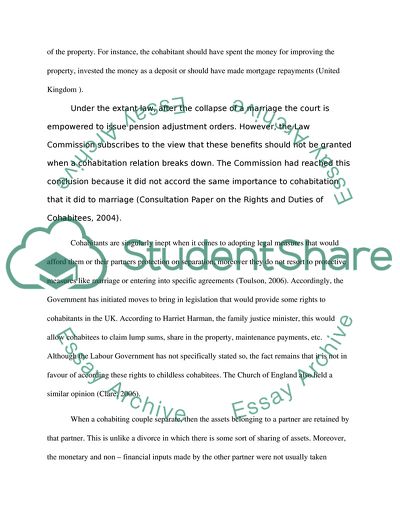Cite this document
(Rights and Duties of Cohabitees Essay Example | Topics and Well Written Essays - 1500 words, n.d.)
Rights and Duties of Cohabitees Essay Example | Topics and Well Written Essays - 1500 words. Retrieved from https://studentshare.org/law/1707364-critically-discuss-to-what-extent-does-the-law-treat-cohabitants-same-sex-couples-couples-where-one-or-both-have-had-gender-reassignment-surgery-and-married-c
Rights and Duties of Cohabitees Essay Example | Topics and Well Written Essays - 1500 words. Retrieved from https://studentshare.org/law/1707364-critically-discuss-to-what-extent-does-the-law-treat-cohabitants-same-sex-couples-couples-where-one-or-both-have-had-gender-reassignment-surgery-and-married-c
(Rights and Duties of Cohabitees Essay Example | Topics and Well Written Essays - 1500 Words)
Rights and Duties of Cohabitees Essay Example | Topics and Well Written Essays - 1500 Words. https://studentshare.org/law/1707364-critically-discuss-to-what-extent-does-the-law-treat-cohabitants-same-sex-couples-couples-where-one-or-both-have-had-gender-reassignment-surgery-and-married-c.
Rights and Duties of Cohabitees Essay Example | Topics and Well Written Essays - 1500 Words. https://studentshare.org/law/1707364-critically-discuss-to-what-extent-does-the-law-treat-cohabitants-same-sex-couples-couples-where-one-or-both-have-had-gender-reassignment-surgery-and-married-c.
“Rights and Duties of Cohabitees Essay Example | Topics and Well Written Essays - 1500 Words”, n.d. https://studentshare.org/law/1707364-critically-discuss-to-what-extent-does-the-law-treat-cohabitants-same-sex-couples-couples-where-one-or-both-have-had-gender-reassignment-surgery-and-married-c.


